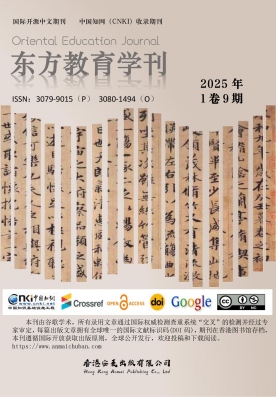
摘要:随着职业教育数字化转型的加速,线上线下混合式教学在提升学习成效与促进个性化培养方面展现出显著潜力[1][2][11]。本文立足WE Learn智慧学习平台,围绕跨境电商“主播—运营”两类核心岗位,提出以“岗位倾向指数”驱动的分流培养与动态调控机制,并构建“三线贯穿、四融并行”的课程体系与“诊断—定向—产出—评价—优化”的教学闭环。研究以产出导向的任务型教学法为核心,融入学习分析,实现“人机协同、精准干预”的数智化教学环境。文章系统阐释模型的理论依据、实施流程与评价方案,呈现双路径任务簇与指标体系设计,讨论效度、伦理与可操作性问题,并提出推广应用的可复制范式。该路径有望提升岗位匹配度与迁移能力,促进“岗课赛证”综合育人,推进课程群建设与校企协同育人,为职业教育高质量发展提供实践范式[9][5]。
关键词:混合式教学;任务型教学;学习分析;岗位倾向指数;三线四融;跨境电商;职业教育
参考文献
[1]Garrison, D. R., & Kanuka, H. (2004). Blended learning: Uncovering its transformative potential in higher education. The Internet and Higher Education, 7(2), 95-105. https://www.sciencedirect.com/science/article/pii/S1096751604000265
[2]Rasheed, R. A., Kamsin, A., & Abdullah, N. A. (2020). Challenges in the online component of blended learning: A systematic review. Computers & Education, 144, 103701. https://www.sciencedirect.com/science/article/pii/S0360131519303322
[3]Garrison, D. R., Anderson, T., & Archer, W. (2000). Critical inquiry in a text-based environment: Computer conferencing in higher education. The Internet and Higher Education, 2(2-3), 87-105. https://www.sciencedirect.com/science/article/pii/S1096751600000166
[4]Hrastinski, S. (2019). What do we mean by blended learning? TechTrends, 63, 564-569. https://link.springer.com/article/10.1007/s11528-019-00375-5
[5]Lang, C., Siemens, G., Wise, A. F., & Gašević, D. (Eds.). (2017). The Handbook of Learning Analytics. Society for Learning Analytics Research. https://www.solaresearch.org/hla-17/
[6]Ferguson, R. (2012). The state of learning analytics in 2012: A review and future challenges. Technical Report. The Open University. https://oro.open.ac.uk/34385/
[7]Slade, S., & Prinsloo, P. (2013). Learning analytics: Ethical issues and dilemmas. American Behavioral Scientist, 57(10), 1510–1529. https://journals.sagepub.com/doi/10.1177/0002764213479366
[8]Ifenthaler, D., & Yau, J. Y.-K. (2020). Utilising learning analytics to support study success in higher education: a systematic review. Educational Technology Research and Development, 68, 1961–1990. https://link.springer.com/article/10.1007/s11423-020-09788-z
[9]国务院办公厅. (2019). 国家职业教育改革实施方案. http://www.gov.cn/zhengce/content/2019-02/13/content_5365341.htm
[10]OECD. (2021). OECD Digital Education Outlook 2021: Pushing the Frontiers with AI, Blockchain and Robots. OECD Publishing. https://www.oecd-ilibrary.org/education/oecd-digital-education-outlook-2021_bbe3c6e1-en
[11]Means, B., Toyama, Y., Murphy, R., Bakia, M., & Jones, K. (2010). Evaluation of Evidence-Based Practices in Online Learning: A Meta-Analysis and Review of Online Learning Studies. U.S. Department of Education. https://eric.ed.gov/?id=ED505824
[12]Long, M. H. (2015). Second Language Acquisition and Task-Based Language Teaching. Wiley-Blackwell. https://onlinelibrary.wiley.com/doi/book/10.1002/9781118886135
[13]文秋芳. (2015). “产出导向法”:中国外语教育理论的创新. 外语教学与研究, 47(4), 547-558. https://kns.cnki.net/kcms/detail/detail.aspx?dbcode=CJFD&filename=FJYY201504004